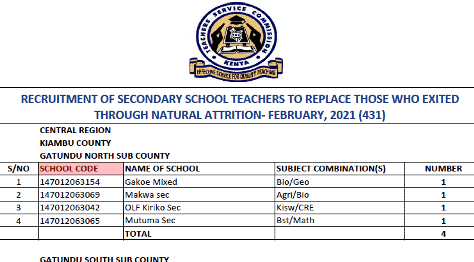The deduction that is dubbed as Provident Fund will see teachers contribute 2 per cent of their monthly salaries towards the new savings scheme.
Literary, Provident fund is another name for pension fund.
The ultimate goal of the deduction is to provide employees with lump sum payments at the time of exit from service. This differs from pension funds, which have elements of both lump sum as well as monthly pension payments.
As far as differences between gratuity and provident funds are concerned, although both types involve lump sum payments at the end of employment, pension fund operates as a defined benefit plan, while the Provident fund is a defined contribution plan.
The new contributory pension scheme will see government employees (including teachers) contribute 7.5% of their monthly basic salaries; while the employer tops up with 15% of the employee’s basic salary.
Effecting of Provident Fund Deductions
To make the burden lighter for teachers, they will contribute only 2% of their basic pay in the first year (2021).
In 2022 (the second year), teachers will contribute 5% of their basic pay while the full 7.5% deduction will be effected as from the third year (2023).
Reprieve for Male Teachers over Provident Fund Deductions
Men have a reprieve, at least for now, as the deduction under the new pension scheme has been taken care of by stoppage of the the Widows and Children’s Pension Scheme (WCPS) contributions.
Source: educationnewshub.co.ke
Continue Reading:
TSC new online payslip portal at https://tpay.tsc.go.ke/
TSC payslip for 2023 now available online (Login, view and download payslip)
TSC Payslips for July 2024 online
TSC payslip Online
TSC Payslip at T-Pay Portal
Latest TSC Payslip Download for this month
TSC payslip online, July now posted (Login, view and download payslip)
Latest TPAY TSC Payslip Online: Login & View Payslip 2024 (All Months)
New TSC Payslip Login Portal- TPay
TSC Payslips Online; TPay Portal Login
TSC payslip online (Register, Login and download your payslip)
The New TSC Payslips Portal Login plus other Teacher Online Services
TSC Payslips Portal – Tpay Login
TSC payslip online (Login, view and download payslip)
TSC payslip online 2024; Login, download payslips and update your profile
Meaning of abbreviations used on the TSC Payslip
How to view your TSC payslip online- Simplified guide
TSC Payslips; Registration, Login, details, password reset and how to download
TSC Payslip and salary for a newly employed secondary school teacher
Latest TSC payslip online, 2024 (Login, view and download payslip)
TSC payslip online, August (Login, view and download payslip)
TSC Payslip at T-Pay
TSC Payslip Online
TSC payslips online- Here are all the answers to your questions on T-pay
TSC payslip online (Login, view and download payslip)
TPay Portal for TSC Payslips
How to access TSC Payslip Online- TSC Tpay Best Guide
Latest TPAY TSC Payslip Online: Login, View & Download Payslip 2024 Easily
TSC payslip online, October (Login, view and download payslip)
TSC Payslip at https://tpay.tsc.go.ke/
TSC Payslip Online
Tpay – TSC Payslips Online Portal
TPAY profile update on TSC Payslips Portal – Simplified Guide
TSC PAYSLIPS ONLINE PORTAL
TSC payslips online; Login, register and download payslips (T-pay portal https://tpay.tsc.go.ke/)
TSC Payslip for newly recruited graduate teachers
TSC payslip online, December (Login, view and download payslip)







